Barcelona’s Iconic Basilica
I along with 3 million others visited Barcelona’s iconic basilica the unfinished Roman Catholic church in 2007. It is a basilica and not a cathedral as a cathedral is the seat of a bishop. Because my son had visited it previously and had sent me a postcard of it, I knew of the cathedral like building but I had no idea of the scale of the building nor the breadth of its architectural styles.
Approaching the church I saw first the oldest facade of the three facades. This facade was over 100 years old and extremely ornate and gothic in style. It is on the right in the featured image at the beginning of this blog. Gothic architecture flourished in the High and Late Middle Ages. Its characteristics are clustered columns, intricate sculptures, ribbed vaults and flying buttresses. This facade depicts the birth of Christ. Antoni Gaudi designed and completed this facade before his death in 1926. He took over the project in 1883 and worked on it until his death, the result of a tramway accident.
The Nativity Facade
Because at first sight this nativity facade is very traditional in appearance, it did not prepare me for what was to come. Arguably, it is the only conservative element in the whole church. There are three portals and the central one leads believers into the Sagrada Familia. The story of Christ’s birth in Bethlehem inspires this facade. So there are statues of Mary, Joseph, the shepherds and the wise men gathered to honour the birth of Christ. Although it was Gaudi’s wish that this facade should be vividly painted, this has not happened and the grey colour takes away a lot from the expressive sculptures.
The Interior
After I absorbed the story on this facade, I entered the church and saw immediately an exhilarating interior. Without a doubt, Barcelona’s iconic basilica did not disappoint. The first facade gave no clue as to what was revealed in the interior. Nature’s forms as well as the christian story inspired Gaudi. So within the church we see turtles, seashells, fruit, trees and other natural forms. The columns grow like trees and branch into the ceiling and the whole effect is of light and colour.
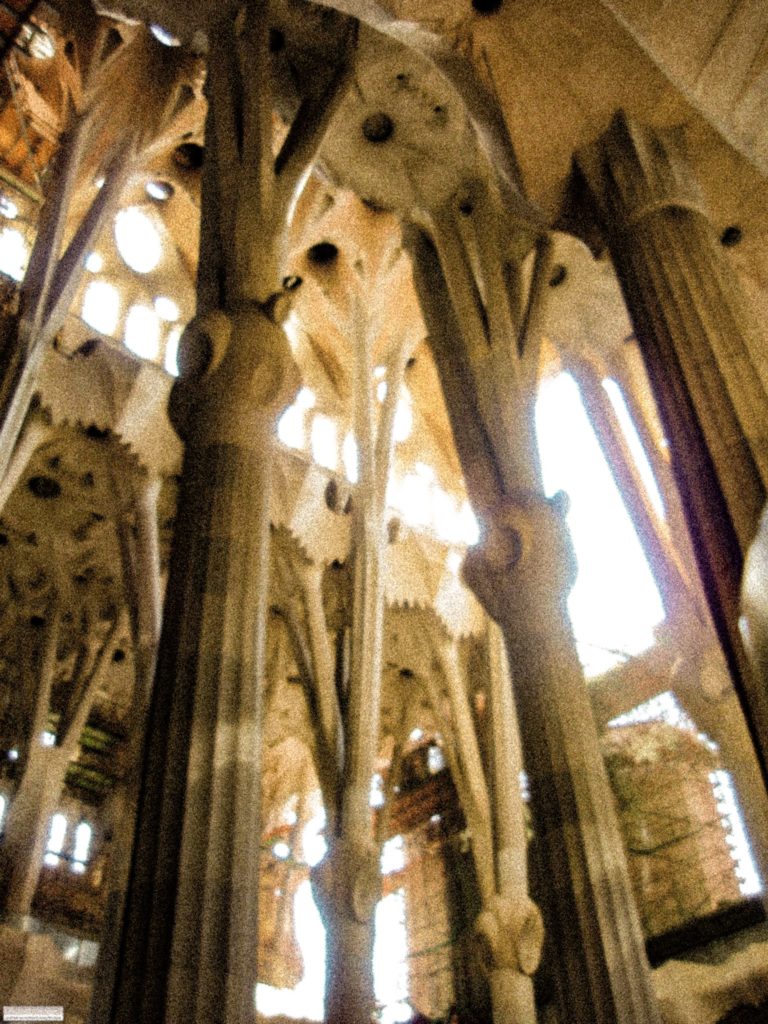
In addition, the stained glass windows introduced colour and despite the scaffolding and work in progress it was a scene of wonder.
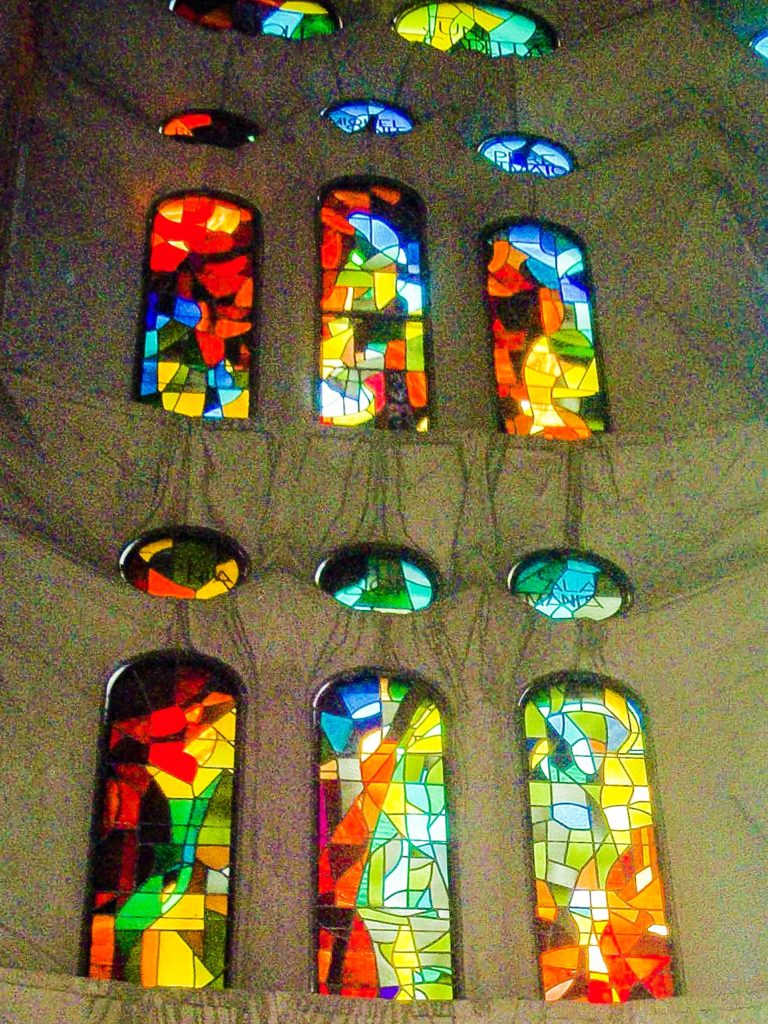
As well, the floral nature of the ceiling design also depicted nature to me.
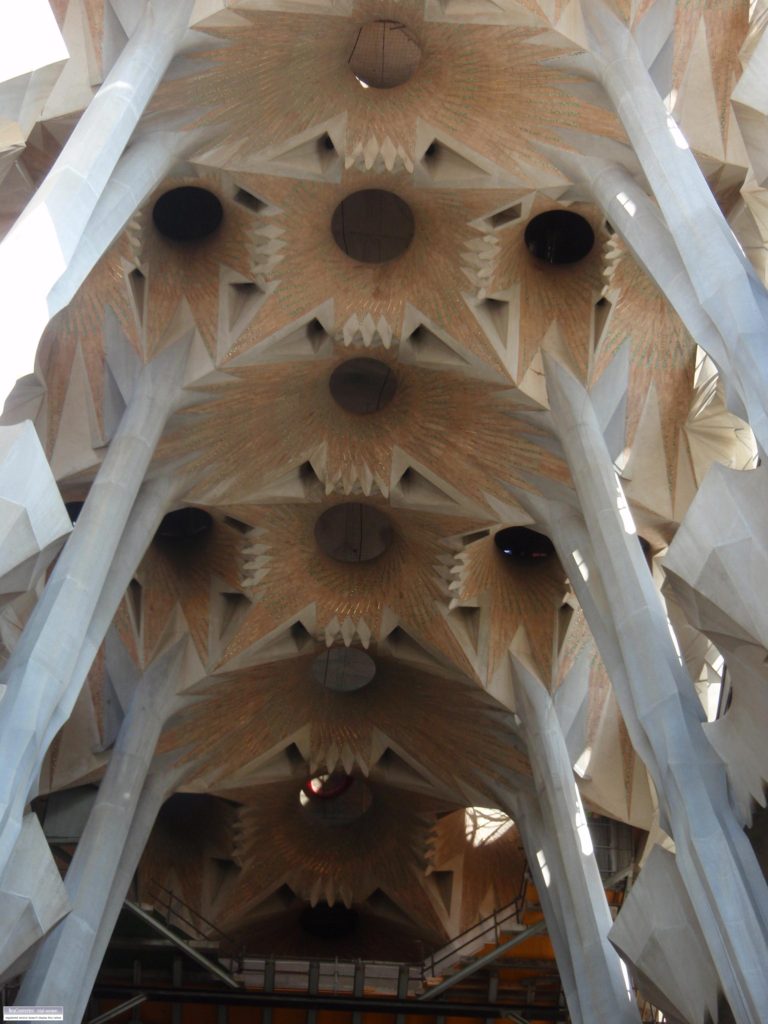
Construction started in the 1880’s. Gaudi died in 1926 and had only seen the completion of one of the three planned facades. Inevitably work slowed down during the 1930’s, with the Spanish Civil War raging. Work began again in the 1950’s but with all the money coming from donations, it was a slow business.
The Passion Facade
Eventually in 1990 Josep Mario Subirachs completed the second facade. This was the Passion Facade showing the crucifixion of Christ. Gaudi had designed this and wanted it to be cold and sobering. It is angular and rigid unlike Gaudi’s flowing curves.

When I visited in 2007 I was not aware of nor did I notice the magic square on this facade. A magic square is a grid of numbers where the horizontal, vertical and diagonal totals are all the same. Albrecht Durer depicted a famous magic square in his work Melancholia in the early sixteenth century. Each row, column and diagonal adds up to 34 and the numbers 1 – 16 are all used once.
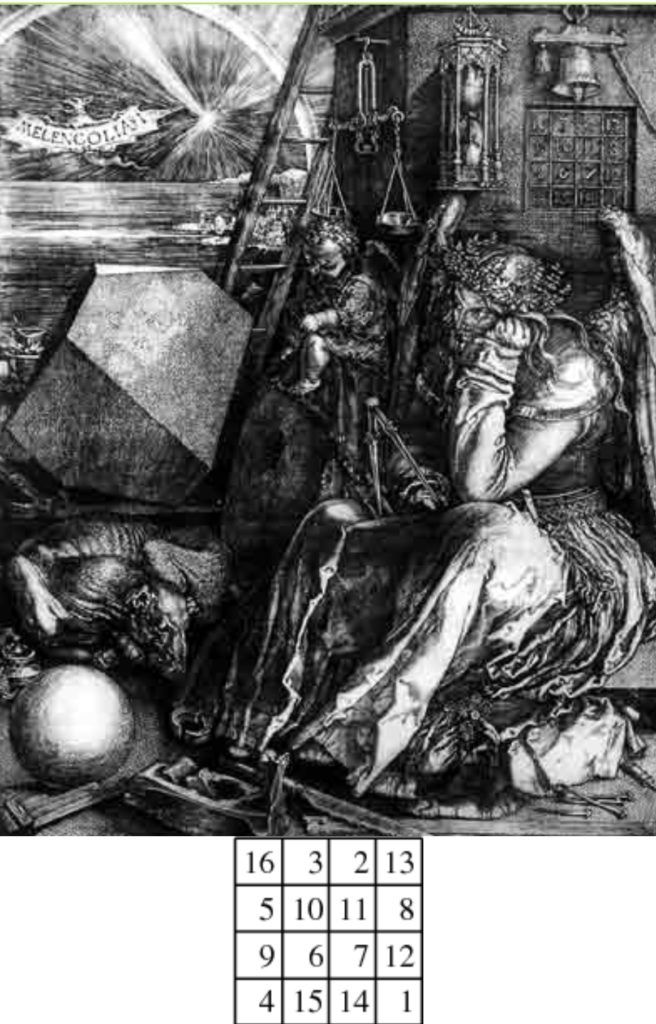
Interestingly, on the passion facade is this magic square. There are two fourteens and two tens but no 12 or 16. The rows, columns and diagonals add up to 33 the age of Christ at his crucifixion. The magic square appears next to a sculpture of the kiss of Judas emphasising Christ’s betrayal by Judas Iscariot.
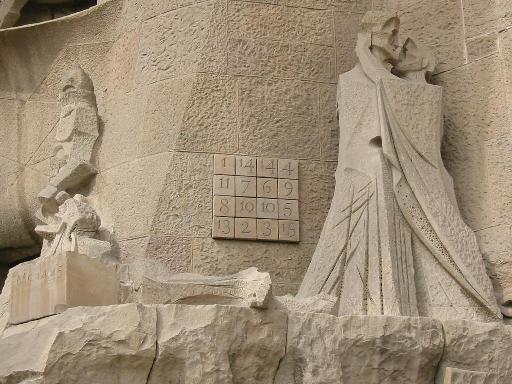
The Board overseeing the construction of The Sagrada Familia hope the completion date will be 2026, 100 years after the death of Gaudi.
Is the basilica a Scofflaw?
In November 2018 I read a report that said the Sagrada Familia surprisingly had no building permit. An American newspaper called Barcelona’s iconic basilica a “Scofflaw”. The Board of the Sagrada Familia denied any wrongdoing.
In reply to the accusation, the Board said the construction had a building permit issued in 1885 by St Marti de Provençals which was then an independent town. Barcelona had extended out and absorbed the smaller community several years later and another permit should have been negotiated.
The present administrator of Barcelona is the far left mayor Ada Colau who took on the board of the Basilica as part of a trend of civil authorities around Spain challenging the legal and tax status of the Roman Catholic Church. Ms Colau accused the Board of working without a building permit, failing to submit plans to tear down existing structures, building over boundaries and failing to pay construction taxes. The Board and the Council came to what Ms Colau called an historic agreement and Barcelona will receive 41 million Euros. This will help cover the transportation infrastructure needs to cater for the 3 million visitors a year.
Prohibition
Having found this out I wondered what the word Scoffhttps://www.merriam-webster.com/dictionary/scofflawlaw meant but had some idea now. I looked it up and found it was a word originating from 1924 and the era of American Prohibition. From 1918 to 1933 it was illegal to make, sell or transport liquor in the United States. Despite this or maybe because of this the production of alcohol went on in illicit stills and breweries. In 1924 a competition was held to find a word for those who openly flouted the law and got away with it.
I also found out that the 99th episode of Seinfeld was called The Scofflaw. This was about a serial parking offender who never paid his fines. Telly Sevalas or Kojak was also apparently a Scofflaw as he was an habitual litterer of the streets and got away with this behaviour. Who would have thought that Barcelona’s iconic basilica would have something in common with Prohibition, Seinfeld and Kojak?
https://appmum.com.au/wp-admin/post.php?post=708&action=edit
great, thanks for sharing this information
Good article, thanks for sharing, please visit
our website
Thank for your share
Visit Us